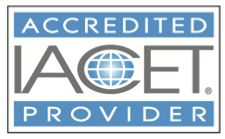 Do today’s leaders have the skills and knowledge necessary to be effective in their roles? Effective leadership plays a crucial role in the success of a business. Yet, many organizations have found that their leaders lack the skills necessary to excel. This leadership gap can make it difficult for companies to compete and grow. It can also negatively impact daily operations and employee retention. But what does the leadership gap mean to job seekers?
Do today’s leaders have the skills and knowledge necessary to be effective in their roles? Effective leadership plays a crucial role in the success of a business. Yet, many organizations have found that their leaders lack the skills necessary to excel. This leadership gap can make it difficult for companies to compete and grow. It can also negatively impact daily operations and employee retention. But what does the leadership gap mean to job seekers?
Job seekers may find themselves needing more prepared leaders for the role. This situation can limit their development and create a barrier to growth, especially for those with leadership aspirations. On the other hand, job seekers with the desired leadership skills may find themselves in high demand.
It’s important to understand the leadership gap, why it happens, and ways to overcome it.
What Is the Leadership Gap?
The leadership gap refers to the difference between the skills and abilities leaders and those they need to be effective in their roles. This gap can compound due to rapid changes in how we work, workforce pressures, and attitudes about work-life balance. This might seem like a theoretical problem, but the leadership gap has real implications for companies and workers.
What’s at the Core of the Leadership Gap?
Although the gap in leadership is a complex workforce issue, there are some common factors contributing to the problem.
From rapid changes in technology and new business models to demographic shifts, the way we work has fundamentally changed. The speed at which these changes have occurred has made it difficult for organizations to keep up in many areas, including developing leadership talent. The combined effect of these have increased the need for more influential leaders.
Demographic changes
Baby boomers, born between 1946 and 1964. This leads to organizations losing experienced leaders who often retire with advanced knowledge and skills. This can leave organizations few leaders who are capable of filling these roles.
Changing work environment
Technological advancements have transformed business and created new jobs and skill requirements. Societal shifts have also significantly changed the landscape of the workplace. Some leaders may need to gain the hard and soft skills necessary to operate effectively in these new environments.
Lack of Development Opportunities
Companies may not provide adequate training and development opportunities for workers to gain leadership skills. This can leave new and aspiring managers without the ability to acquire and improve their leadership abilities.
Globalization
Globalization has led to a more complex and fast-paced business environment, requiring leaders to be adaptive and innovative. It also introduced a heightened need for cross-cultural skills. These factors have combined to create new skills and competency requirements for leaders.
New Business Models
The rise of new business models and industries has created a need for leaders with different skill sets. Many leaders are not prepared to effectively manage in these new environments without adequate training and skill development.
Leadership Gap Examples
Many leaders themselves feel the leadership gap. According to the 2021 Global Leadership Forecast, a Development Dimensions, Inc. publication, less than half of all leaders felt effective in critical skills such as building talent, managing change, digital skills, and strategic thinking.
To be a successful leader, you need a broad range of hard and soft skills. Although many of these skills are not specific to leadership roles, they may be used differently by leaders. For example, communication is always essential, but leaders must be able to deliver negative news, mediate conflicts, and even motivate their teams.
Some examples of leadership skills that are commonly missing or underdeveloped include:
- Adaptability: The ability to change and pivot quickly in response to new information, market shifts, and other changes in the business environment
- Change management: The ability to plan, overcome resistance, and implement organizational changes
- Communication skills: The ability to clearly and effectively communicate vision, goals, and ideas to others
- Cultural competence: The ability to understand, respect, and work effectively with people from diverse backgrounds and cultures
- Digital skills: The ability to use technology, data, and digital tools to drive business results
- Emotional intelligence: The ability to:
- Identify
- Understand
- Manage one’s own emotions
- Respect the feelings of others
- Innovation: The ability to think creatively, identify new solutions to old problems, and drive change within the organization
- Strategic thinking: The ability to see the big picture, understand how all the pieces fit together and make decisions accordingly
What Hinders Closing the Leadership Gap?
Failing to focus on skill development is a significant contributor to the leadership gap, but it’s not solely to blame. Additional factors make fixing the gap more complicated than simply upskilling workers.
The following obstacles make closing the leadership gap a challenge:
- Flat organizational structure: A flat or horizontal company structure can limit upward mobility, making it difficult for workers to move into leadership positions. It may also make it difficult for workers to get guidance and mentorship from experienced leaders, hindering the development of new leaders within the company.
- Inadequate succession planning: Many companies need a more straightforward plan to replace retiring leaders. Additionally, they may need help identifying leadership potential within their current workforce.
- Lack of investment in leadership development: Companies need to prioritize leadership development and training, leading to a shortage of skilled leaders. In turn, this creates morale problems and retention issues. It leaves organizations with a leadership team that needs more skills.
- Low retention, high turnover: A revolving workforce depletes a company’s talent pool. This forces the company to compete for new workers, which can reduce internal efforts to train and develop internal talent. High turnover also increases burnout by increasing the workload of remaining workers, leading to even more turnover.
- Resistance to change: Some organizations and leaders need to change how they do things. This includes opposition to using new technology and processes and extends to ideas about leadership and management, such as how workers are:
- Evaluated
- Promoted
- Trained
- Developed
Ways Organizations can Bridge the Leadership Gap
Closing the leadership gap is crucial for the success of businesses, but it’s also important for job seekers with leadership aspirations. Fortunately, there are many ways to address the issue that benefit both sides of the labor equation, such as:
- Learn to recognize leadership potential within an organization.
- Develop a comprehensive leadership development program.
- Offer leadership training for employees at all levels, not just management.
- Establish clear performance expectations and provide regular feedback.
- Encourage collaboration across departments and team-building activities.
- Foster a culture of learning and continuous improvement.
- Strongly encourage internal promotions and career growth opportunities.
- Create mentorship and coaching programs for employees.
Ways Job Seekers can Bridge the Leadership Gap
Companies working to overcome a leadership gap should encourage and support employees seeking additional education. This includes offering access to educational tools, internal training programs, or tuition help for formal education.
Job seekers that want to take on leadership roles may feel intimidated by the leadership gap. However, anyone can build the skills needed for success with the right approach and resources.
Aspiring leaders that prepare themselves for a leadership position by developing in-demand skills may find more opportunities open to them. These skills include:
- Communication
- Problem solving
- Strategic thinking
- Change management
- Emotional intelligence
- Digital acumen
Wharton’s online leadership and management certificate program can help you gain the right mix of hard and soft skills you need to be a successful leader. You’ll have access to a world-class faculty, the latest research, and expert insights. And with online courses that require just two to four hours of coursework a week, you can fit education into your busy schedule.



